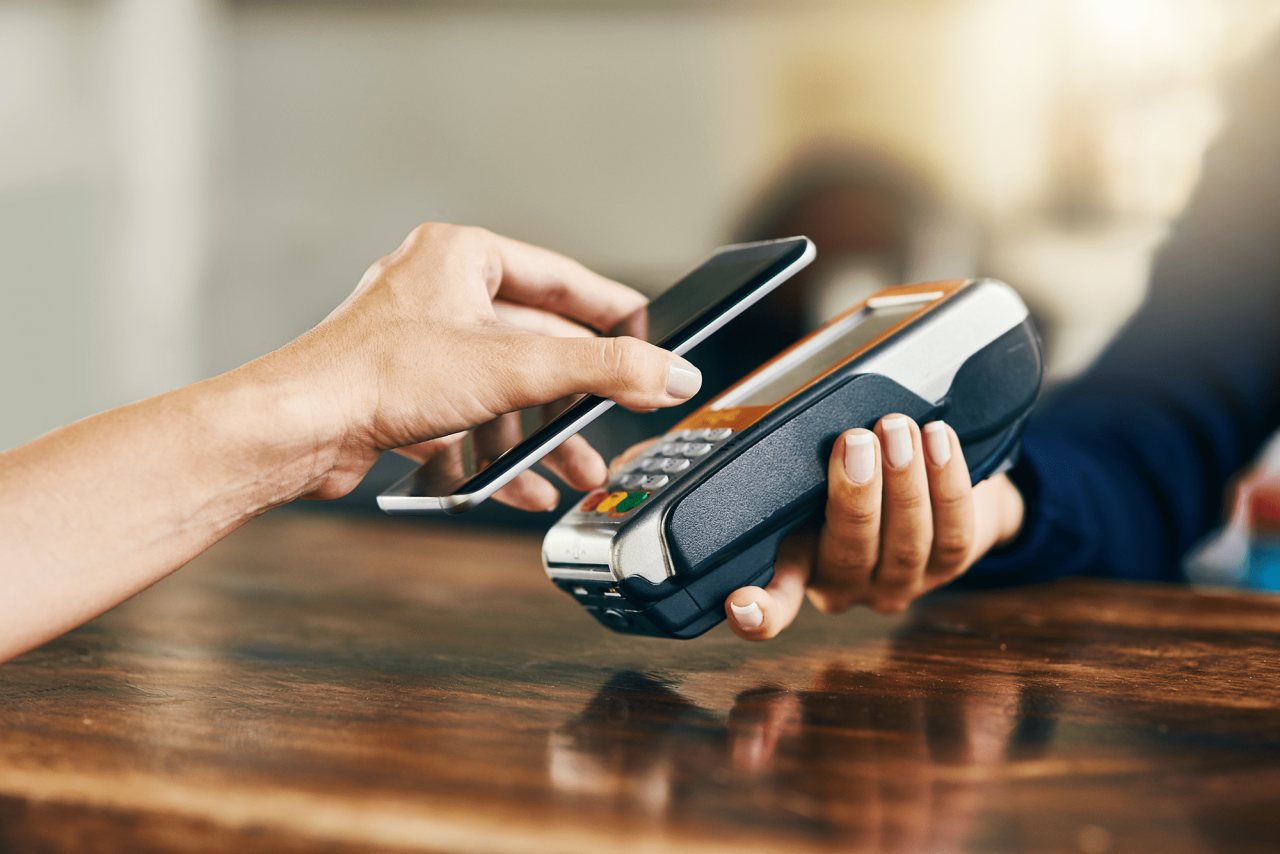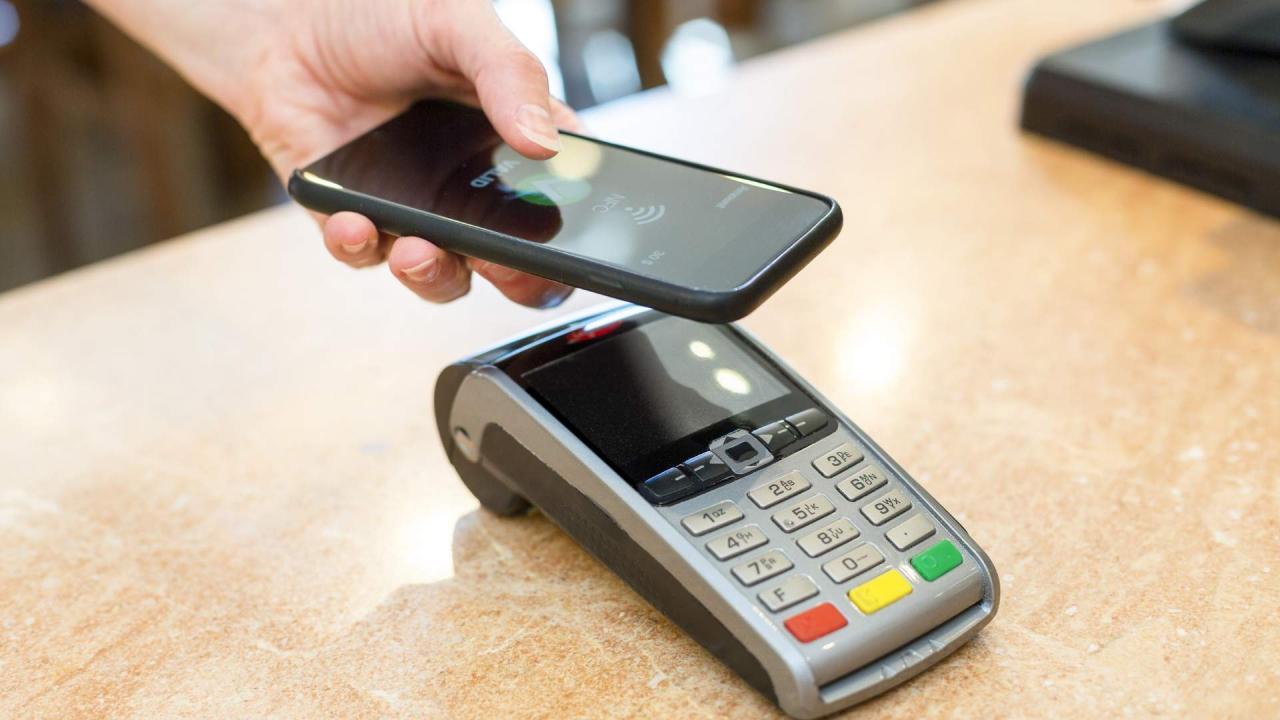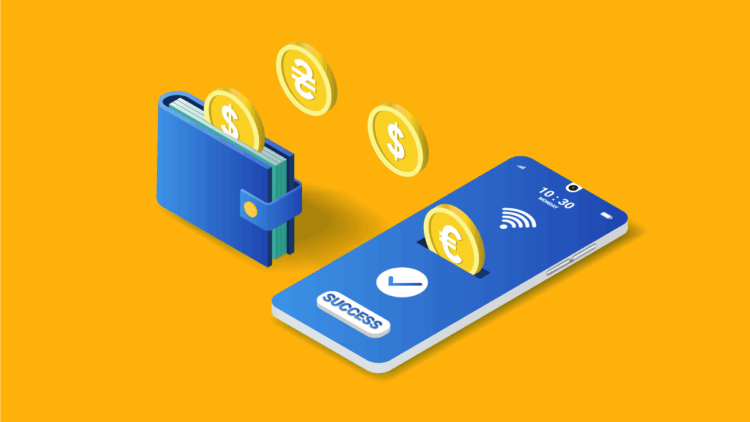In a rapidly evolving financial landscape, digital wallets have transcended mere convenience to become a transformative force, redefining how individuals and businesses conduct transactions globally. Once a niche technology, their omnipresence today underscores a profound shift away from traditional cash and cards towards seamless, secure, and instant digital exchanges. This burgeoning popularity isn’t accidental; it’s fueled by technological advancements, changing consumer habits, and a growing demand for integrated financial services. This comprehensive article delves into the core mechanics of digital wallets, explores the myriad benefits they offer, navigates the challenges impeding their full potential, and charts the exciting trajectory of their continued evolution as a cornerstone of the modern economy.
What are Digital Wallets?

At its essence, a digital wallet (or e-wallet) is a software-based system that securely stores payment information and allows users to make transactions electronically. This isn’t just about storing credit card numbers; modern digital wallets are sophisticated ecosystems that can hold a variety of digital assets and facilitate diverse financial interactions.
Key components and functionalities of a typical digital wallet include:
A. Payment Instrument Storage:
A.1. Credit and Debit Cards: Securely stores encrypted details of multiple credit, debit, and prepaid cards, allowing users to select their preferred payment method without physically carrying cards.
A.2. Bank Accounts: Links directly to bank accounts for direct transfers, bill payments, and top-ups.
A.3. Loyalty and Reward Cards: Stores digital versions of loyalty programs, ensuring users collect points and access discounts automatically during transactions.
A.4. Cryptocurrencies: Many advanced wallets now support various cryptocurrencies, enabling users to store, send, and receive digital currencies.
B. Transaction Capabilities:
B.1. Contactless Payments (NFC): Utilizes Near Field Communication (NFC) technology to enable tap-and-pay transactions at compatible point-of-sale (POS) terminals, mirroring the functionality of contactless cards.
B.2. QR Code Payments: Facilitates payments by scanning QR codes displayed by merchants, widely popular in many Asian markets due to its simplicity and low infrastructure cost.
B.3. Online Payments: Provides a streamlined checkout experience for e-commerce, auto-filling payment details and often offering one-click purchasing.
B.4. Peer-to-Peer (P2P) Transfers: Allows users to send money directly to other individuals using phone numbers, email addresses, or usernames, often instantly.
C. Security Features:
C.1. Encryption: All stored data, especially payment credentials, is heavily encrypted to protect against unauthorized access.
C.2. Tokenization: Converts sensitive payment information into a unique, random token during transactions, meaning actual card numbers are never shared with merchants.
C.3. Biometric Authentication: Incorporates fingerprint scanning, facial recognition, or iris scanning for secure login and transaction authorization.
C.4. PINs and Passwords: Standard security layers requiring user authentication.
D. Additional Features (Beyond Payments):
D.1. Digital Tickets and Boarding Passes: Stores event tickets, airline boarding passes, and public transport passes.
D.2. Digital IDs: Emerging functionality to securely store digital driver’s licenses or national identification cards.
D.3. Budgeting Tools: Many wallets integrate features to track spending, categorize expenses, and help users manage their finances.
D.4. Investment Options: Some wallets are expanding to offer micro-investment features, allowing users to invest small amounts in stocks or funds.
D.5. Remittances: Facilitating international money transfers at competitive rates.
The true power of digital wallets lies in their ability to consolidate diverse financial functions into a single, user-friendly interface, offering convenience, enhanced security, and often, additional value-added services.
The Driving Forces Behind the Digital Wallet Boom
The exponential growth of digital wallets is not a singular phenomenon but a confluence of technological, social, and economic factors accelerating their adoption worldwide.
A. Ubiquitous Smartphone Penetration:
A.1. Device Accessibility: The widespread availability and affordability of smartphones have provided the fundamental hardware platform for digital wallets. Most modern smartphones come equipped with NFC capabilities and robust security features essential for wallet functionality.
2. App Ecosystem: Users are accustomed to managing various aspects of their lives through mobile applications, making the integration of financial services into this familiar ecosystem seamless.
B. Evolving Consumer Preferences:
B.1. Demand for Convenience: Consumers increasingly prioritize speed, ease, and simplicity in transactions. Digital wallets offer exactly that—no fumbling for cards or cash, just a quick tap or scan.
B.2. Seamless Online Shopping: The rise of e-commerce has normalized online payments, and digital wallets offer a much smoother and faster checkout experience compared to manually entering card details.
B.3. Touchless Transactions: Heightened hygiene awareness, particularly post-pandemic, has driven a preference for contactless payment methods over handling cash or shared POS terminals.
C. Technological Advancements and Security:
C.1. NFC and QR Code Maturity: The widespread adoption and reliability of NFC technology for tap-to-pay and the simplicity of QR code scanning have made in-person digital payments practical and widely accepted.
C.2. Enhanced Security Protocols: Advances in encryption, tokenization, and biometric authentication (fingerprint, facial recognition) have significantly boosted the security of digital wallets, addressing early consumer concerns.
C.3. Backend Infrastructure: Robust payment processing networks and cloud infrastructure support the real-time processing and security requirements of millions of digital wallet transactions.
D. Financial Inclusion and Underserved Populations:
D.1. Access for Unbanked/Underbanked: In many developing economies, digital wallets, particularly mobile money services, provide essential financial services to populations without traditional bank accounts, fostering financial inclusion.
D.2. Lower Transaction Costs: For small businesses and individuals, digital wallet transactions can often be cheaper than traditional card processing fees or cash management.
E. Aggressive Industry Promotion and Competition:
E.1. Tech Giant Investment: Companies like Apple, Google, and Samsung have heavily invested in promoting their respective digital wallet platforms, leveraging their vast user bases.
E.2. Fintech Innovation: A vibrant ecosystem of fintech startups is continuously innovating, offering new digital wallet features, loyalty programs, and integrated financial services.
E.3. Merchant Adoption: As consumer demand grows, more merchants are upgrading their POS systems to accept digital wallet payments, creating a positive feedback loop.
F. Government and Regulatory Support:
F.1. Digitalization Push: Many governments are actively promoting digital payments to increase financial transparency, reduce crime, and boost economic efficiency.
F.2. Open Banking Initiatives: Regulatory frameworks that encourage data sharing between financial institutions and third-party providers are fostering innovation in the digital wallet space.
These drivers collectively create a compelling environment for the continued proliferation and adoption of digital wallets as the preferred payment method for a growing segment of the global population.
Why Digital Wallets Are Revolutionizing Payments

The advantages of embracing digital wallets extend far beyond mere transactional ease, offering significant benefits to consumers, merchants, and the broader financial ecosystem.
A. For Consumers:
A.1. Unparalleled Convenience: Eliminates the need to carry physical wallets, cards, or cash. A smartphone or wearable is often all that’s needed for transactions.
A.2. Enhanced Security: Tokenization and encryption protect sensitive card details. Biometric authentication adds a robust layer of security. If a phone is lost or stolen, data is often more secure than a physical wallet.
A.3. Speed and Efficiency: Transactions are typically faster than chip-and-PIN or cash payments, especially with contactless features.
A.4. Integrated Loyalty and Rewards: Automatically applies loyalty points, discounts, and rewards, maximizing savings without extra effort.
A.5. Financial Tracking: Many wallets offer built-in tools to monitor spending, categorize expenses, and gain insights into financial habits.
A.6. Reduced Clutter: Consolidates multiple cards, tickets, and IDs into one digital location.
A.7. Global Usability: Increasingly accepted across different countries and currencies, simplifying international travel.
B. For Merchants:
B.1. Faster Checkout Times: Reduces queues and improves customer flow, particularly in high-volume retail environments.
B.2. Increased Sales and Customer Loyalty: A seamless payment experience can improve customer satisfaction, encourage repeat business, and reduce cart abandonment in e-commerce.
B.3. Lower Cash Handling Costs: Reduces risks associated with cash (theft, counting errors, bank trips) and processing fees.
B.4. Reduced Fraud: Tokenization and advanced security features help minimize chargebacks and fraud related to compromised card data.
B.5. Rich Data Insights: Digital transactions generate valuable data on customer purchasing patterns, enabling personalized marketing and inventory management.
B.6. Broader Customer Reach: Attracts tech-savvy customers and those who prefer digital payment methods.
C. For the Financial Ecosystem:
C.1. Financial Inclusion: Extends financial services to unbanked and underbanked populations, fostering economic participation.
C.2. Reduced Shadow Economy: Increased traceability of transactions helps combat illicit financial activities.
C.3. Efficiency in Payment Rails: Streamlines the payment processing infrastructure, reducing operational costs for banks and payment processors.
C.4. Innovation Catalyst: Drives continuous innovation in fintech, leading to new services and business models.
C.5. Environmental Benefits: Reduces the need for physical printing of bills, receipts, and plastic cards, contributing to sustainability efforts.
The comprehensive benefits offered by digital wallets are compelling, making them an increasingly attractive solution for modern financial interactions.
Challenges and Obstacles to Widespread Adoption
Despite their significant advantages, digital wallets still face several hurdles that prevent universal adoption and limit their full potential.
A. Security Concerns and Perception:
A.1. Fear of Hacking: Despite robust security, some users remain wary of storing sensitive financial information on their devices, fearing hacking or data breaches.
A.2. Device Loss/Theft: Concerns about what happens if a smartphone is lost or stolen, even with security measures in place.
B. Merchant Acceptance and Infrastructure:
B.1. POS Terminal Upgrades: Smaller merchants, particularly in developing regions, may lack the financial resources or technical know-how to upgrade their point-of-sale systems to accept contactless or QR code payments.
B.2. Interoperability Issues: Fragmentation in payment networks and varying standards can sometimes lead to issues with acceptance across different merchants or regions.
B.3. Perceived Cost: Merchants might perceive high transaction fees, although these are often competitive with or lower than traditional card processing fees.
C. Consumer Behavior and Habits:
C.1. Inertia and Habit: Many consumers are accustomed to traditional payment methods (cash, cards) and are reluctant to change long-standing habits.
C.2. Lack of Awareness/Education: Some potential users may not fully understand how digital wallets work, their benefits, or their security features.
C.3. Trust Issues: Distrust in new technologies or specific providers can hinder adoption, especially among older demographics or in regions with less mature digital infrastructures.
D. Regulatory and Legal Frameworks:
D.1. Varying Regulations: A lack of harmonized regulations across different countries can complicate international expansion and cross-border transactions for digital wallet providers.
D.2. Consumer Protection: Ensuring adequate consumer protection against fraud, unauthorized transactions, and data privacy breaches in a rapidly evolving digital payment landscape.
D.3. AML/KYC Compliance: Digital wallet providers must adhere to strict Anti-Money Laundering (AML) and Know Your Customer (KYC) regulations, which can be burdensome, especially for international services.
E. Internet and Smartphone Penetration Gaps:
E.1. Digital Divide: In remote or underdeveloped areas, limited access to reliable internet and affordable smartphones remains a fundamental barrier to digital wallet adoption.
E.2. Feature Phone Reliance: A significant portion of the global population still uses basic feature phones, which are incompatible with most modern digital wallet apps.
F. Fragmented Market:
F.1. Too Many Options: The proliferation of numerous digital wallet apps and platforms (e.g., Apple Pay, Google Pay, Samsung Pay, PayPal, bank apps, independent fintech apps) can confuse consumers and lead to market fragmentation.
F.2. Limited Cross-Platform Compatibility: Some wallets are tied to specific operating systems or device manufacturers, limiting their universal appeal.
Addressing these challenges requires a multi-faceted approach involving technological innovation, targeted education campaigns, supportive regulatory environments, and collaborative efforts between financial institutions, tech companies, and governments.
The Future Trajectory of Digital Wallets
The journey of digital wallets is far from complete; rather, it’s entering a new phase of sophisticated integration and expanded functionality. Several key trends are shaping their future:
A. Convergence into Super Apps:
A.1. All-in-One Platforms: Digital wallets will increasingly become central components of “super apps” that integrate payments with messaging, social media, e-commerce, food delivery, transportation, and other services (e.g., WeChat Pay in China). This creates stickiness and convenience.
A.2. Personalized Ecosystems: These super apps will leverage AI and user data to offer highly personalized services and recommendations, making the digital wallet a central hub for daily life.
B. Integration with Emerging Technologies:
B.1. Blockchain and Cryptocurrencies: Wider integration of blockchain technology for more secure, transparent, and potentially cheaper cross-border payments. Digital wallets will become primary interfaces for managing cryptocurrencies and NFTs.
B.2. Artificial Intelligence (AI) and Machine Learning (ML): AI will enhance fraud detection, personalize financial advice, and automate budgeting within digital wallets.
B.3. Augmented Reality (AR) and Virtual Reality (VR): As the metaverse evolves, digital wallets will be crucial for seamless transactions within virtual environments, enabling purchases of digital assets, experiences, and virtual goods.
B.4. IoT and Wearables: Further integration of digital payment capabilities into smartwatches, fitness trackers, and other IoT devices for even greater convenience in contactless payments.
C. Embedded Finance and Invisible Payments:
C.1. Payments as a Feature: Financial services will become seamlessly embedded into non-financial apps and services (e.g., buy now, pay later options directly at e-commerce checkout, payment for ride-sharing integrated into the app).
C.2. Frictionless Transactions: The goal is to make payments so seamless they become almost “invisible,” where the transaction occurs automatically in the background based on pre-authorized settings (e.g., smart refrigerators ordering groceries).
D. Central Bank Digital Currencies (CBDCs):
D.1. Government-Issued Digital Money: As central banks explore and launch their own digital currencies, digital wallets will be essential interfaces for holding and transacting with CBDCs, potentially revolutionizing national payment systems.
E. Increased Personalization and Financial Wellness:
E.1. Proactive Financial Management: Wallets will evolve beyond tracking to offer proactive advice, automated savings, and personalized investment opportunities based on individual financial goals.
E.2. Sustainable Spending: Features that help users track their carbon footprint from purchases or direct them towards sustainable brands.
F. Focus on Cross-Border Payments and Remittances:
F.1. Cheaper and Faster Transfers: Digital wallets are poised to significantly disrupt the traditional remittance market by offering faster, more transparent, and cheaper cross-border money transfers.
The trajectory indicates that digital wallets will become not just tools for payment, but comprehensive financial dashboards and gateways to the broader digital economy, continuously expanding their functionalities and integration into daily life.
Conclusion
The boom in digital wallets marks a pivotal moment in the history of finance and commerce. What began as a convenient alternative to physical payment methods has matured into a sophisticated ecosystem, driving unprecedented levels of efficiency, security, and financial inclusion. Their rise is intrinsically linked to the pervasive influence of smartphones, the shifting demands of a digitally native consumer base, and relentless innovation within the fintech sector.
While challenges such as lingering security perceptions, infrastructure disparities, and regulatory complexities remain, the overwhelming benefits they offer to individuals and businesses alike underscore their inevitable dominance. As technology continues to advance, integrating with AI, blockchain, and the burgeoning metaverse, digital wallets are poised to transform from mere payment tools into the central hub of our financial and digital lives. They are not just simplifying transactions; they are democratizing access to financial services, fostering economic growth, and paving the way for a truly cashless, hyper-connected global economy. Embracing this digital shift is no longer an option but a strategic imperative for navigating the future of commerce.












